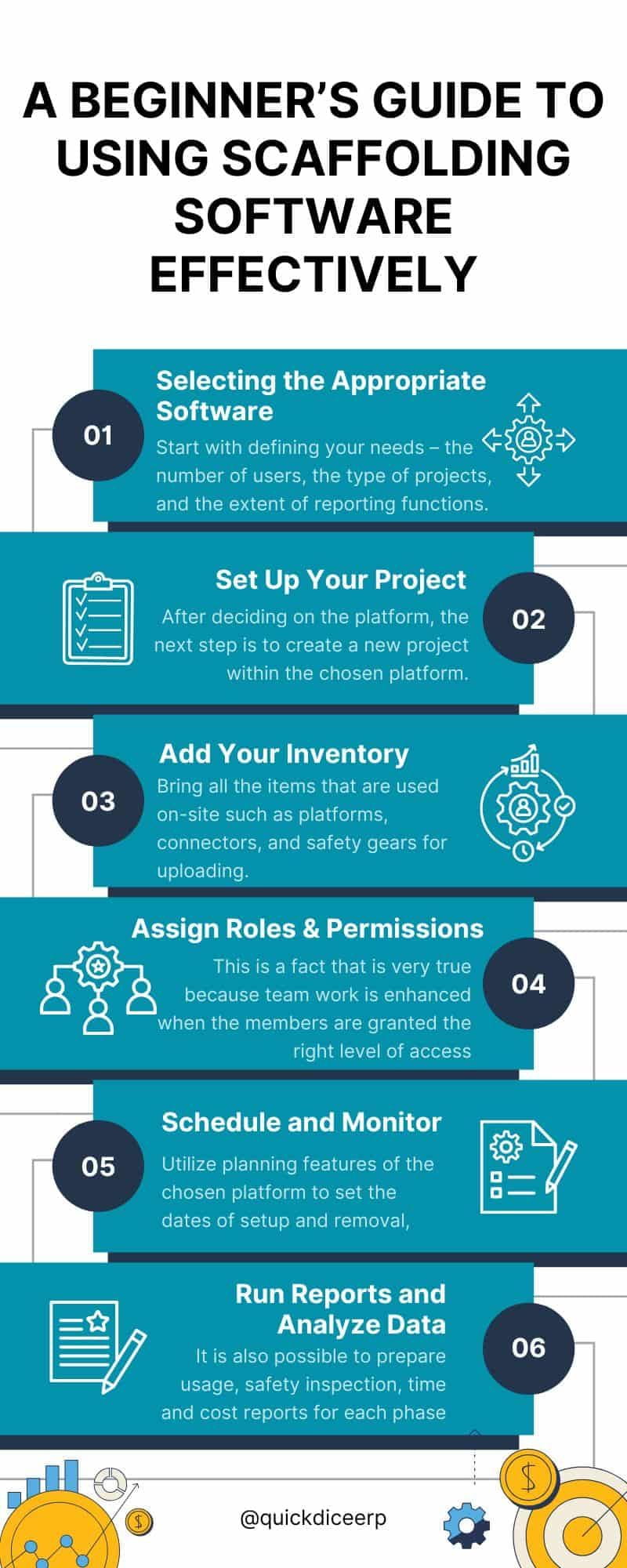


Discover how beginners can use scaffolding software effectively for better project planning, safety compliance, and productivity.
When utilizing a scaffolding program for the first time, some of these options are likely to be confusing to the new user, especially if he is unfamiliar with construction and site management tools. However, selecting the right scaffolding software can dramatically improve your projects, manage your teams, and make compliance much easier. Scaffolding software allows you to manage materials, timetables, safety inspections, and documentation from a single platform, making it ideal for daily site planning or project management.
As a beginner, you must grasp how to utilize scaffolding software, its functions, and how to apply it in the most basic manner. This book is specifically designed for newbies to provide them with knowledge about the importance of digital scaffolding management and to illustrate that it is not as tough as it may appear, provided the correct tools are utilized.

The following are some of the advantages of using scaffolding software.

If one is first entering the market, the focus should be on the following components of scaffolding software:
These qualities make the software practical and easy to use, especially for those who are not very interested in computers and technology.
Begin by describing your requirements – the number of users, the type of projects, and the scope of reporting services. Categorize the tools based on their capabilities, approach to handling user interface, and compatibility. Make sure to rank platforms that offer demo versions or free trials so that your team can test the platform’s usability before deciding whether to subscribe to it. As a result, it is critical to select software that does not interfere with business operations but rather complements them.
After choosing on a platform, the next step is to start a new project within that platform. The task site’s name, projected start and finish dates, and required resources should all be entered. Most systems offer drag-and-drop templates or the ability to upload plans, which aids in getting things set up properly. This becomes your home screen, where you may manage the timetable and other key checklists like safety inspections.
Bring all of the items used on-site, such as platforms, connectors, and safety gear, to upload. Maintaining this inventory also limits the possibility of overbuying, as it is clear which items are in stock and which are being used. It also aids in budgeting and future planning, depending on the number of sites to manage or when moving products from one location to another.
This is a very valid statement since teamwork improves when individuals are given the appropriate level of access. Organize access permissions based on roles—the user can be given read-only access, or he or she can be provided the ability to edit and alter content, as well as become an administrator. This allows for safe data storage and retrieval, as well as appropriate accountability. Role-based access control also allows each team member to focus on his or her responsibilities without being sidetracked by tasks that are not relevant to their line of duty.
Tips for Beginners:
It may appear difficult to begin with the adoption of scaffolding software, but the potential benefits are enormous once it is included in the project. An effective software solution can help improve the orderliness of a project site by managing shifts, reducing task overlap, regulating safety procedures, and maintaining team coordination. It’s all about making tasks or processes more efficient and simple, rather than more convoluted or hard.
